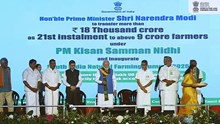
ICAR–Central Inland Fisheries Research Institute (CIFRI), Barrackpore, celebrated National Fish Farmers Day 2025 with great enthusiasm at its headquarters on July 10. The day commemorates the historic success of the induced breeding technique pioneered by Prof. Hiralal Chaudhury and his team at the Angul Fish Farm, Cuttack, on July 10, 1957. This breakthrough, achieved by the then Central Inland Fisheries Research Station, now ICAR-CIFRI—sparked India’s first Blue Revolution.
The event was graced by Chief Guest Dr. Sukanta Majumdar, Union Minister of State for Education and Development of the North Eastern Region, Government of India. Distinguished guests included Dr. Ravishankar C.N., Former Director and Vice-Chancellor, ICAR-CIFE, Mumbai, and Prof. Kallol Paul, Vice-Chancellor, Kalyani University, West Bengal. The gathering comprised 120 fishers and farmers, including 27 women, as well as entrepreneurs, researchers, and representatives from NGOs.
Seventeen progressive fish farmers including four women fishers from eight states—West Bengal, Bihar, Jharkhand, Chhattisgarh, Assam, Kerala, Karnataka,Gujarat, and Uttar Pradesh—were felicitated for their exemplary contribution to the inland fisheries sector.To mark the occasion Honourable Minister released few publications and products of ICAR-CIFRI.Dr. B.K.Das, Director of the institute signed MOU with two wetlands of North 24 Parganas, W.B.
In his address, Dr. Majumdar urged fish farmers to adopt modern technologies developed by CIFRI and utilize schemes like PMMSY (Pradhan Mantri Matsya Sampada Yojana) to enhance fish production. He emphasized the importance of science-backed practices in making the fisheries sector a cornerstone of India’s economic and nutritional security.

Dr.B.K.Das, Director, ICAR-CIFRI, highlighted the institute’s ongoing research in improving productivity in reservoirs and wetlands, river restoration, sustainable development goals (SDGs), and environmental flow requirements. He called upon award-winning farmers to share their experiences with fellow stakeholders to help uplift rural livelihoods.Dr. Das also mentioned that at present the thrustof the institute is to increase the production and productivity of medium and large reservoirs and wetlands as well as river restoration protocols, including the environmental flow requirement for open water fisheries under natural resource management mode.
India’s fisheries sector is currently experiencing rapid growth, with a record production of 18.42 million tonnes in 2024–25—up from 0.7 million tonnes in 1950–51, positioning the country as the second-largest fish producer globally. The sector contributes about 1.09% to the national GDP and over 7% to agricultural GDP, moving confidently towards the goal of a Second Blue Revolution with a target of 22 million tonnes of production. India with its vast and diverse aquatic systems in the forms of rivers (29,000km), estuaries (2,00,000 ha), wetlands (3,50,000 ha) and ponds (22,00,000 ha), offers tremendous scope for increasing the production and productivity of fish from India.
The programme began with a floral tribute to Prof. Hiralal Chaudhury and served as a platform for dialogue between fishers, scientists, entrepreneurs, and policymakers. The celebration reinforced the collective vision of a prosperous inland fisheries sector aligned with the national goal of Viksit Bharat—a developed India.
















